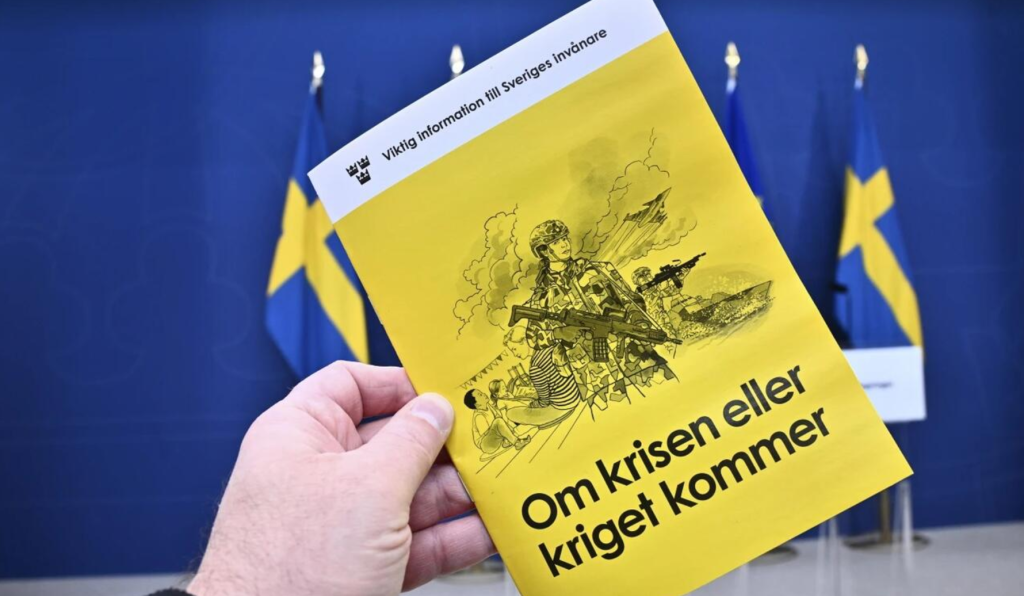On Monday, the Swedish government launched a major initiative to inform its citizens about how to prepare for potential wartime scenarios amid rising tensions with Russia. This comes in the wake of recent reports that the Biden administration has authorized Ukraine to carry out long-range strikes on Russian territory with U.S.-provided weaponry. Millions of Swedes are receiving updated pamphlets titled “In Case of Crisis or War,” elaborating on survival strategies. This initiative reflects a significant shift from Sweden’s post-World War II neutrality—the country is now a member of NATO—while also grappling with the realities of an ongoing conflict in Eastern Europe. The pamphlet emphasizes the importance of being prepared for a range of scenarios, including the possibility of a sudden invasion by a hostile nation.
The newest version of the pamphlet is notably larger than its predecessor, which was published six years ago, reflecting the heightened threat perception in the region. It not only covers military invasions but also addresses how citizens can respond to various emergencies, ranging from disruptions in essential services to extreme weather events. In parallel, Finland, another NATO newcomer and a nation sharing a border with Russia, has also released guidelines advising its citizens on readiness for crises. This proactive stance reveals a collective mentality in Nordic countries aimed at preparing for the worst contingencies brought on by geopolitical tensions in the area.
Historically, the idea of a civil emergency booklet is not new to Sweden, as similar publications have existed since World War II. The updated information stresses resilience and collective defense, urging that in the event of an attack, all citizens must contribute to resisting aggression and ensuring the nation’s sovereignty. The introduction of the pamphlet points out the increasing risks from armed conflicts, terrorism, and cyber threats prevalent in today’s world, emphasizing community unity as a vital component of national security and emergency preparedness.
The pamphlet outlines various local initiatives to bolster collective defiance against any potential invasion. These include citizens organizing into volunteer defense units, offering blood donations, and engaging in CPR and survival skills training. Through these channels, the government encourages active participation in disaster preparedness, fostering a proactive mindset among the populace. In Finland, the government’s digital booklet reflects a long-standing commitment to readiness, historically shaped by its geographical proximity to Russia and the need for national resilience.
Since the onset of the Ukraine conflict, the urgency surrounding these survival tactics has increased significantly. Their implementation has sparked discussions among citizens regarding their vulnerabilities and the necessity of being prepared for extreme conditions. For many, such as a 24-year-old Finnish student, these guidelines offer a sense of reassurance, even though the thought of potential conflict still lingers. The growing movement among Nordic nations towards building awareness and readiness speaks to a broader concern surrounding security in Europe and highlights the social implications of ongoing geopolitical instability.
The message being communicated by these government initiatives establishes not only a framework for survival during crises but also stresses the importance of community solidarity in facing threats. As Sweden and Finland bolster their preparedness strategies in light of current conflicts, the pamphlets serve as a practical guide to navigating uncertainty while reiterating the importance of individual responsibility in contributing to national defense. In this context, the collective effort to maintain peace and security becomes a shared endeavor that unites citizens against any impending challenges, embodying the spirit of resilience that defines the current Nordic approach to security.

